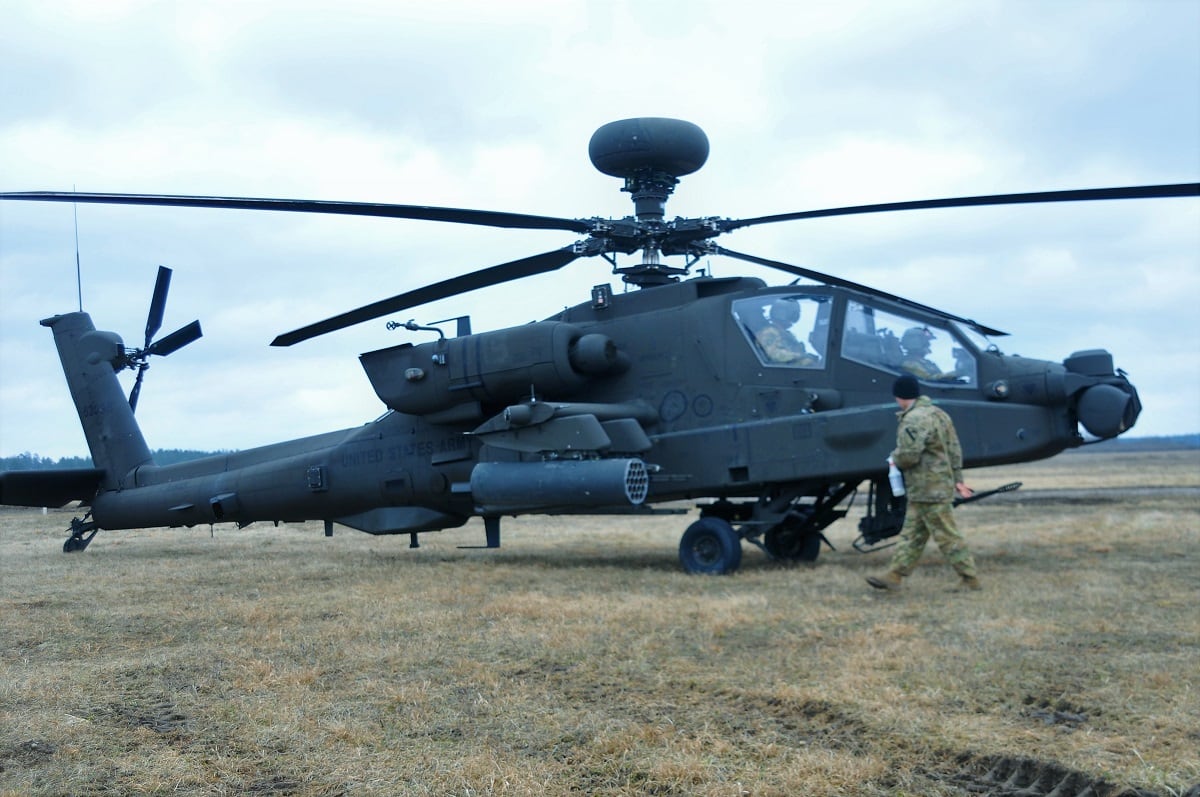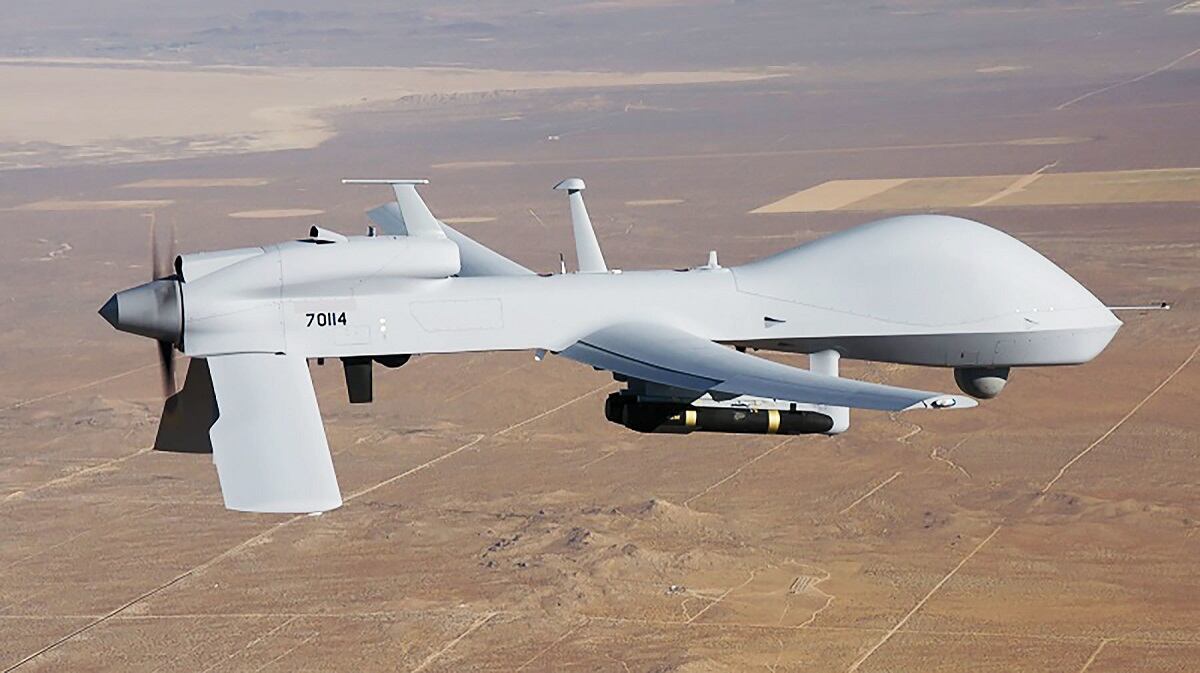NASHVILLE, Tenn. ― The U.S. Army has struggled the most with Gray Eagle and Shadow unmanned aircraft systems when it comes to accident rates.
Shadow accidents
The Shadow UAS experienced a whopping 271 mishaps, although it experienced only one Class A mishap. That’s because the value of the aircraft is low enough that even totaling one in a crash wouldn’t reach Class A standards of incurring more than $1 million in damages.
The Class A mishap took place in 2011 in Afghanistan where a Shadow that was in a holding pattern collided midair with a C-130 transport aircraft. Both were damaged.
The Army lost the most Shadow UAS in 2011 ― a total of 69. The aircraft was deployed to Iraq and Afghanistan and was also being used in the United States for training purposes. The aircraft suffered the most mishaps in Afghanistan.
Click here to find out more about what’s next for U.S. Army aviation from the 2018 AAAA conference.
Based on the total flight hours in 2011, there was a Shadow accident every 1,839 hours. But even though Shadow flew 126,874 hours, 2011 wasn’t the worst year in terms of accident rates.
In 2014, Shadow experienced 42 mishaps but only flew 55,537 hours, so the accident rate climbed to one every 1,322 hours. The majority of those accidents took place in Afghanistan.
The good news is the Army has seen an improvement in the Shadow mishap rates. In 2015, there were only 16 mishaps out of 44,241.5 flight hours.
And in 2016 and 2017, the Army has kept the accident rates down to 30 in 2016 with 68,778.2 flight hours and down to 29 in 2017 with 77,015 flight hours.
Shadow failures have run the gamut when it comes to mechanical failures; however, there are 12 clearly noted engine failures, according to the accident reports reviewed, among other issues such as propulsion failure, fuel system malfunction, overheating and generator ignition failure, to name a few.
Other mishaps that could be attributed to external factors or piloting errors include the failure to catch the UAS in the arresting net, reports of loss of control, high winds and running out of fuel in holding patterns.
RELATED

The Army is in the process of swapping out its older versions of Shadow ― the V1 ― with a newer version ― the V2 ― which includes an upgraded engine and a longer wingspan. The upgrades give the aircraft an additional three hours of endurance.
V2s also migrate the UAS from an analogue to a digital system, which allows for the integration of the Tactical Common Data Link. The TCDL gives Shadow the capability to communicate and be controlled on different levels by a pilot in a manned helicopter, enabling manned-unmanned teaming.
In 2014, the Army decided to retire its OH-58 Kiowa Warrior helicopters with AH-64 Apache attack helicopters teamed with Shadow UAS, giving the small drone a chance to play a big role.
Shadow-maker Textron is also working on an M2 version that provides beyond-line-of-sight connectivity as well as another seven hours of endurance. The company has also been looking to replace Shadow’s engine.
Where does the Gray Eagle stand?

For the much larger Gray Eagle, it experienced 54 mishaps from 2011 to 2017, and 35 of them were Class A.
There were more accidents in Afghanistan than anywhere else ― a total of 27 accidents. The Gray Eagle there experienced the most accidents ― six mishaps, where four were Class A ― in 2013, followed by five in 2014. Four of those were Class A.
The rate fell in Afghanistan, but only by one or two accidents a year.
Stateside, Gray Eagle had a particularly bad year in 2016, with five accidents (four of them Class A). Several of those appear to be caused by engine problems.
In 2011, the Gray Eagle performed well, experiencing only two mishaps over the course of 54,735.2 hours.
But it’s been downhill from there. As the operational tempo for the aircraft increased, so did the accidents.
The Gray Eagle’s mishap rate climbed to five accidents over 48,691.6 hours of flight. The rate continued to climb from six in 2013 and six in 2014, to eight in 2015, to 15 mishaps in 2016. The Army experienced an accident every 5,108 hours that year.
Last year saw a slight improvement, with 12 mishaps over 77,389.3 hours of flying time.
At least 11 of the 35 Class A Gray Eagle mishaps appear to be due to engine problems. Four were related to uncommanded activity, three crashed into mountains, seven lost links and two ran out of fuel while in a holding pattern.
The causes of some mishaps are ambiguous, and it’s unclear whether pilot error is to blame, such as a Gray Eagle hitting a hangar, a crash landing or striking a power line.
What does the Army say about these mishaps?
“All of our UAS accident rates are improving, and there are a bunch of reasons for that,” Maj. Gen. Frank Tate, the director of Army aviation in the service’s G-3/5/7 branch, told Defense News in an interview at the Pentagon.
One of the main drivers of UAS accidents at the brigade combat team level ― with Shadows and Gray Eagles ― are materiel failures and problems with the UAS, Tate said.
“When we talk about executing an emergency procedure, there is nobody there to say: ‘All right, I got the stick and I’m going to flite it down and I’m going to land it softly,’ ” he said. “So materiel failures are particularly problematic in unmanned systems.”
The Army has “aggressively gone after” ― in coordination with the manufacturers of Shadow (Textron) and Gray Eagle (General Atomics) ― “the root causes of our most consistent materiel failures: engine issues, turbo-charger issues, etc., etc.,” Tate said. And the service has “made huge headway on that for both Gray Eagle and Shadow.”
Tate said the Army is now weighing when it will stop upgrading current systems and make the leap to the new UAS that will fit in for the way the service envisions future combat operations.
But until that decision is made, the Army will continue to address and improve common materiel failures causing mishaps.
At the same time, the service continues to work on “standardization, risk mitigation, safety and training” as part of the solution to reducing mishaps, Tate said.
Within Army aviation, combat aviation brigade commanders within divisions are taking a more significant role in developing and monitoring safety and standardization programs for Shadow platoons, according to Tate.
“That is helping us be more effective for all the same reasons that Army aviation accident rates are doing down. We are now trying to move that into our UAS world as well,” he said.
Jen Judson is an award-winning journalist covering land warfare for Defense News. She has also worked for Politico and Inside Defense. She holds a Master of Science degree in journalism from Boston University and a Bachelor of Arts degree from Kenyon College.




